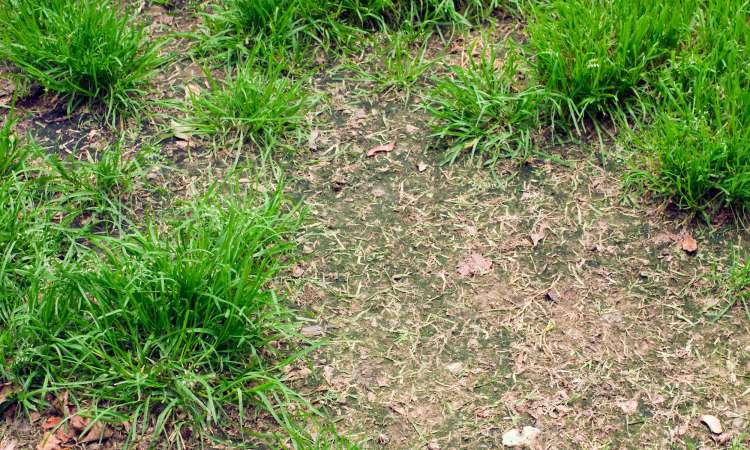 The grass is a beautiful part of any landscape, but it can be frustrating when it starts to look patchy. There are many causes of patchy grass, and fortunately, there are also many ways to fix it. In this blog post, we will discuss the most common causes of patchy grass and how to solve them!
The grass is a beautiful part of any landscape, but it can be frustrating when it starts to look patchy. There are many causes of patchy grass, and fortunately, there are also many ways to fix it. In this blog post, we will discuss the most common causes of patchy grass and how to solve them!
Table of Contents
What is a Patchy Grass?
A patchy lawn is one with thin, bare, or discolored patches. The grass may be patchy due to a number of reasons, including poor drainage, compaction, lack of nutrients, insect damage, or disease. Whatever the cause, there are ways to fix it!
Common Causes of Patchy Grass and Solutions
#1. Poor Drainage
If your grass is patchy due to poor drainage, the solution is simple: improve the drainage! You can do this by aerating your lawn (which will help water and air to reach the roots of your grass) and by making sure that there is no standing water on your lawn. You can also improve drainage by planting grass that is tolerant of wet conditions.
#2. Compaction
Compacted soil can prevent water, air, and nutrients from reaching the roots of your grass. As a result, your grass may start to look patchy. The solution is to aerate your lawn (which will help to break up the compacted soil) and avoid walking on your lawn when it is wet.
#3. Lack of Nutrients
If your grass is patchy due to a lack of nutrients, you can fertilize your lawn. Be sure to choose a fertilizer that is appropriate for the type of grass you have. You can also add compost to your lawn, which will help to improve the quality of the soil.
#4. Insect Damage
Insects can damage your grass, causing it to become patchy. The best way to prevent insect damage is to maintain a healthy lawn. You can do this by watering and fertilizing regularly, and by mowing at the correct height. If you already have a problem with insects, you can treat your lawn with an insecticide.
#5. Disease
The disease can also cause your grass to become patchy. The best way to prevent disease is to maintain a healthy lawn. You can do this by watering and fertilizing regularly, and by mowing at the correct height. If you already have a problem with a disease, you can treat your lawn with a fungicide.
#6. Shade
Shade from trees or buildings can cause your grass to become patchy. The best way to solve this problem is to choose grass that is tolerant of shade and to provide supplemental watering during periods of drought. You can also prune trees or shrubs that are shading your lawn.
#7. Dog Urine
Dog urine can cause brown patches on your lawn. The best way to prevent this is to train your dog to urinate in a specific area. You can also try using a fertilizer that is designed to neutralize the pH of dog urine.
#8. Spills
Spills from cars, grills or other sources can cause patches of grass to die. The best way to prevent this is to clean up spills immediately. You can also try using a product that is designed to protect your grass from oil and grease.
#9. Heat
The heat from the sun can cause your grass to become patchy. The best way to prevent this is to choose grass that is tolerant of heat and to provide supplemental watering during periods of drought. You can also try mowing your lawn a bit higher during periods of extreme heat.
These are just the common causes of patchy grass. If you are still having trouble with your lawn, it is best to consult a professional. They will be able to diagnose the problem and recommend the best course of action.
Hiring a Professional
If you are still having trouble with your lawn, it is best to consult a professional. They will be able to diagnose the problem and recommend the best course of action. When hiring a professional, be sure to ask about their qualifications, experience, and rates. You should also ask for references from past clients. Once you have found a qualified professional, be sure to discuss your expectations and budget with them. This will help to ensure that you are both on the same page.
Here at Heroes Lawn Care, we are always happy to help our clients achieve the perfect lawn. We offer a variety of services, including lawn mowing, aeration, fertilization, and more. Contact us today to learn more about how we can help you!






